'Korean Ceramics: From Archaeology to Art History' at Princeton University Art Museum

Maebyong vessel (detail), 12th–13th century, Korean, Goryeo dynasty, 918–1392. Stoneware with inlaid decoration of crane and clouds under celadon glaze; h. 36.0 cm., diam. 21.0 cm. (14 3/16 x 8 1/4 in.). Museum purchase, Trumbull-Prime Fund (y1929-406) © 2016 The Trustees of Princeton University
PRINCETON, NJ.- The ceramics in this installation not only highlight the technological and artistic developments that occurred over two millennia on the Korean Peninsula but also demonstrate the complex position ceramic research occupies between the fields of archaeology and art history. Ceramics have anthropological and archaeological significance, serving as physical evidence of past human activity. They are also of art historical interest, aesthetically appreciated for their glazes, delicate forms, and intricate decorative techniques.
Installation arranged by Sol Jung, PhD Student, Department of Art & Archaeology, Princeton University.
This installation complements the spring 2014 Tang Center for East Asian Art Lecture Series. Three lectures on Korean art will be given by Professor Song-mi Yi, Professor Emerita of Art History, The Academy of Korean Studies. For more information see:http://www.princeton.edu/tang/lectures/tcls/.
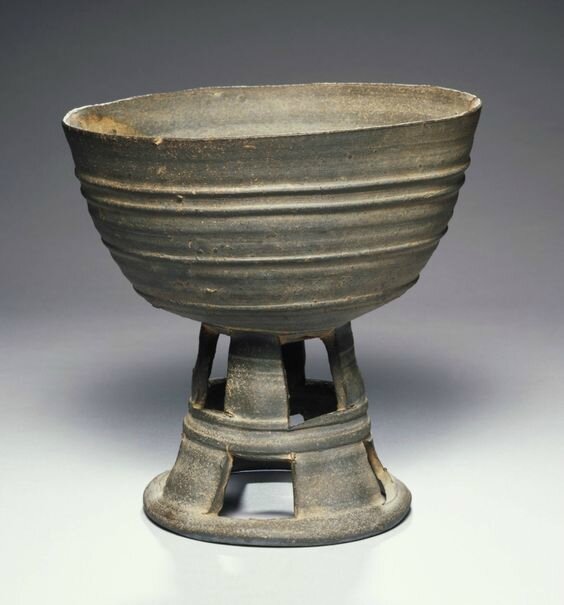
Cut-stem bowl, Korean, Three Kingdoms (Silla) period, 57 B.C.–A.D. 668. Stoneware, h. 16 cm., diam. 16.3 cm. (6 5/16 x 6 7/16 in.). Gift of Winifred Hall, in memory of Arthur McTaggart (2005-6) © 2016 The Trustees of Princeton University
This type of stoneware cut-stem bowl comes from the tomb burials of the kingdom of Silla (57 B.C.–A.D. 668). Similar works were produced in the neighboring kingdom of Kaya (42–562), but Kaya works are distinguished by rectilinear cutouts placed one above the other along the foot of the vessel, while Silla wares tend to have a two-tiered checkered pattern, as in this example. The typical Silla cut-stem bowl had a lid and a rim designed to hold the lid in place. This example lacks a rim, and if there was once a lid, it is now lost. This type of bowl should be differentiated from cut-stem stands, which resemble cut-stem bowls but are more elaborately decorated and designed to hold other vessels. This bowl would have been used to provide tomb offerings of food and drink for the deceased.
This cut-stem bowl is an example of one of the earliest known high-fired wares in the world, requiring kiln temperatures in excess of 1000° Celsius. Such wares were produced in woodfired, tunnel-shaped “climbing kilns,” typically built on the sides of hills. This closed-kiln design, in contrast to those for earlier open or semi-open kilns, produces intense and steady heat, allowing for control of the flow of oxygen into the firing chamber. Three Kingdoms period stoneware developed its characteristic gray color from the reduction of oxygen in the kiln chamber; unlike earlier, soft, low-fired earthenware, the pieces are hard, dense, and watertight. The rectangular cut-outs are indicative of Silla style stoneware, unlike those from the kingdom of Gaya, which often are decorated with triangular shapes.

Maebyong vessel, 12th–13th century, Korean, Goryeo dynasty, 918–1392. Stoneware with inlaid decoration of crane and clouds under celadon glaze; h. 36.0 cm., diam. 21.0 cm. (14 3/16 x 8 1/4 in.). Museum purchase, Trumbull-Prime Fund (y1929-406) © 2016 The Trustees of Princeton University
This vessel, with its broad shoulders and voluptuous S-shaped profile, exemplifies the Goryeo vessel type called maebyeong. It is decorated with white cranes and clouds that presumably float in the "sky" of the celadon glaze. To create the special technique of sanggam inlay, a design was engraved into the clay body and then filled with white or black clay. Afterward, the entire object was glazed and fired to a celadon hue. While this maebyeong is sparsely decorated, other examples of sanggam are more ornate, with intricate, repetitive designs. Modern reproductions of Goryeo celadon frequently emulate themaebyeong vase type.
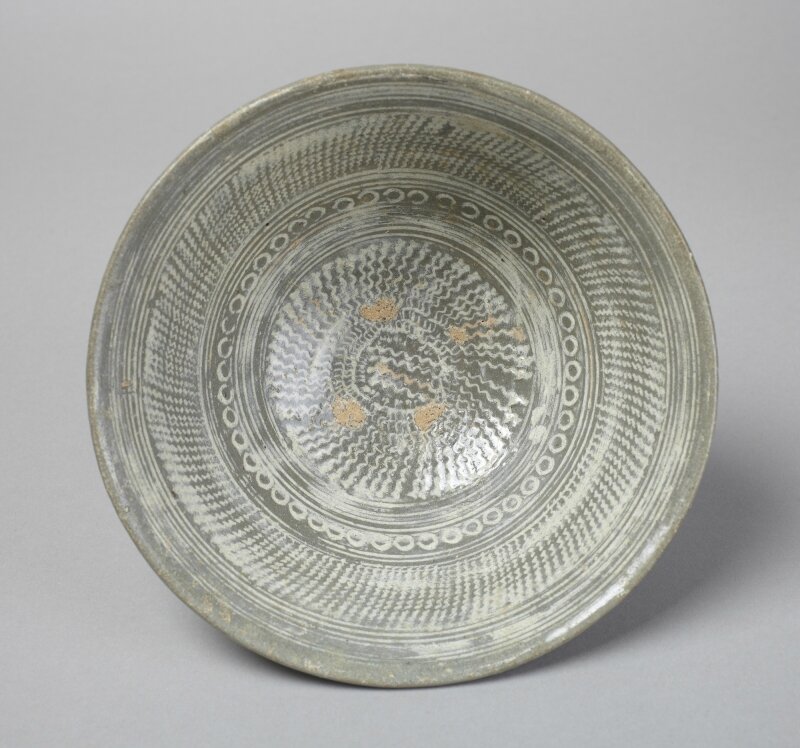
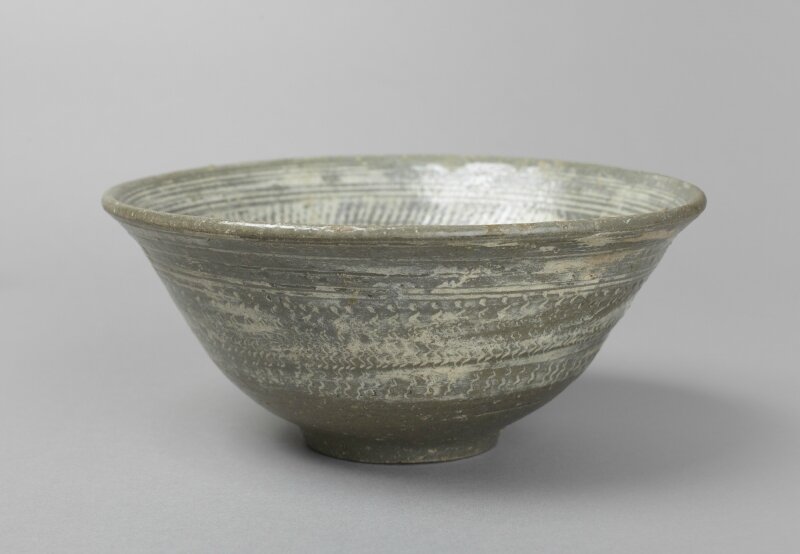
Bowl, 15th century, Korean, Joseon dynasty, 1392–1910. Stoneware; buncheong ware with stamped slip-inlaid designs under celadon glaze; h. 8.0 cm., diam. 17.7 cm. (3 1/8 x 6 15/16 in.). Gift of the Nicholas Andrew and Mitzi Peterson Natsios Family: Christine, Valerie, Alexandra and Deborah Natsios, Graduate School Class of 1979 (2006-835) © 2016 The Trustees of Princeton University
Buncheong, meaning “powdered celadons,” is the successor to Goryeo celadons. While using the same basic materials as celadon, buncheong is distinctive for the decorative use of a white slip underneath the celadon glaze, which creates its “powdered” appearance. These wares are seen as common and rough compared to their Goryeo predecessors, but they reveal a change in patronage and aesthetics that resulted from the new political regime of the Joseon dynasty. Such changes are reflected in official Joseon ideology, which eschewed Buddhism and advocated Neo-Confucianism from Song dynasty (960–1279) China. This bowl has incised designs, which are distinctive of buncheong ware from the southern Jeolla province. Despite its initial popularity, however, buncheong production came to an abrupt end due to the Japanese invasions of Korea from 1592 to 1598. Korean potters taken to Japan initiated buncheong revivals, spreading appreciation of its aesthetics among Japanese potters and patrons.

Jar, 18th century, Korean, Joseon dynasty, 1392–1910. Porcelain with underglaze-blue floral designs; h. 26.7 cm., diam. 22.3 cm. (10 1/2 x 8 3/4 in.). Gift of J. Lionberger Davis, Class of 1900 (y1964-4) © 2016 The Trustees of Princeton University
Underglaze porcelain technique and cobalt blue entered Korea through Ming dynasty (1368–1644) China and were initially reserved for royalty. Eventually, production expanded to include an elite clientele. This bulbous jar with a straight neck most likely held wine, and it exhibits the shift away from buncheong after the Japanese invasions of Korea during the late sixteenth century. Underglaze painting in copper red, iron brown, or cobalt blue (the last seen here) became the main decorative mode. The application of painted motifs with a brush expresses a fluid calligraphic aesthetic that is distinct from repetitive sanggam inlay designs or engraved patterns.

Vase, 10th–14th century, Korean, Goryeo dynasty, 918–1392. Ceramic with incised decoration under celadon glaze; h. 32.8 cm., diam. 18.0 cm. (12 15/16 x 7 1/16 in.). Gift of Horace Mayer (y1961-61) © 2016 The Trustees of Princeton University
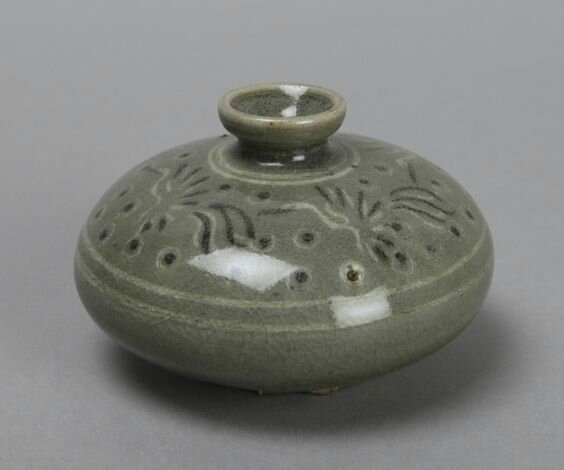
Oil bottle, 12th Century, Korean, Goryeo dynasty, 918–1392. Ceramic with inlaid designs under celadon glaze; h. 5.1 cm., diam. 8.0 cm. (2 x 3 1/8 in.). Gift of J. Lionberger Davis, Class of 1900 (y1966-54) © 2016 The Trustees of Princeton University
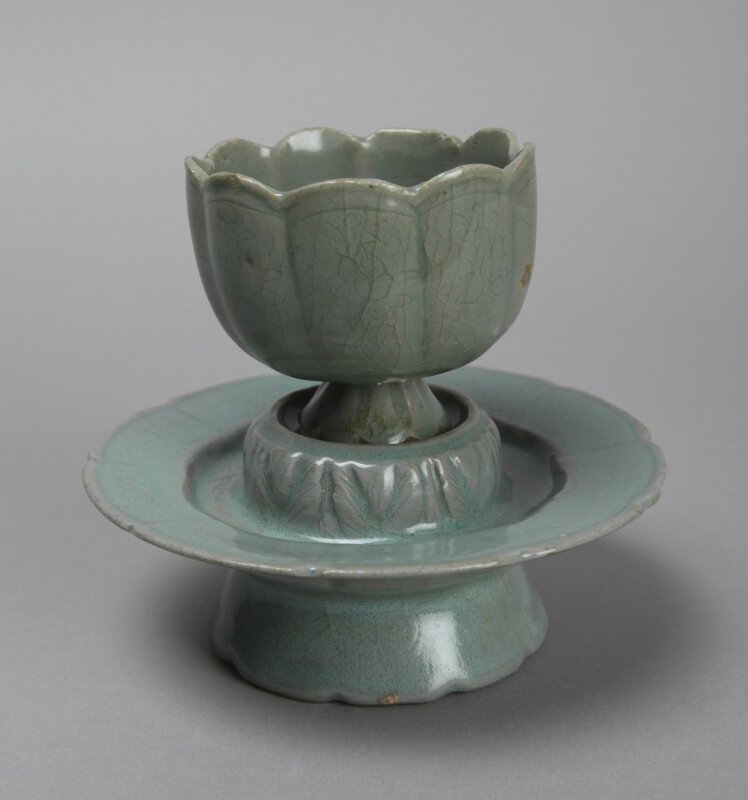
Cup and stand, 12th century, Korean, Goryeo dynasty, 918–1392. Ceramic with incised designs under celadon glaze; cup: h. 6.6 cm., diam. 7.4 cm. (2 5/8 x 2 15/16 in.); stand: h. 5.4 cm., diam. 13.3 cm. (2 1/8 x 5 1/4 in.). Gift of J. Lionberger Davis, Class of 1900 (y1966-55 a-b) © 2016 The Trustees of Princeton University
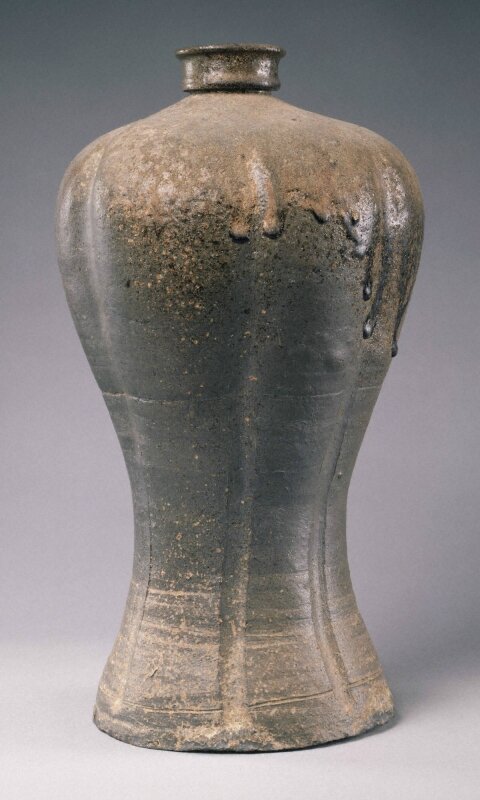
Maebyong vessel, 12th–late 14th century, Korean, Goryeo dynasty, 918–1392. Dark stoneware with ash glaze; h. 35.5 cm., diam. 19.3 cm. (14 x 7 5/8 in.). Bequest of John B. Elliott, Class of 1951 (1998-315) © 2016 The Trustees of Princeton University
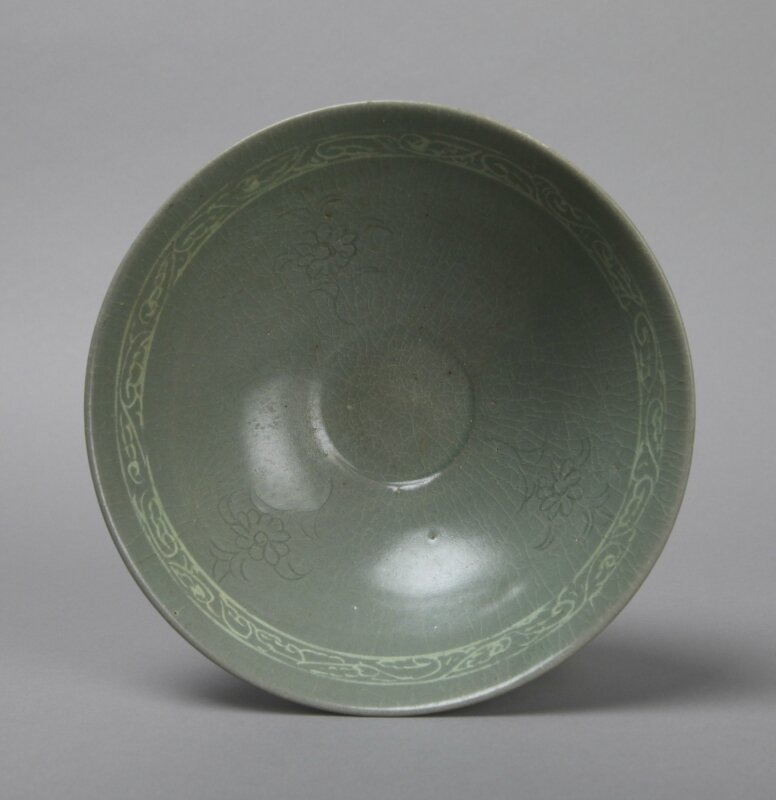
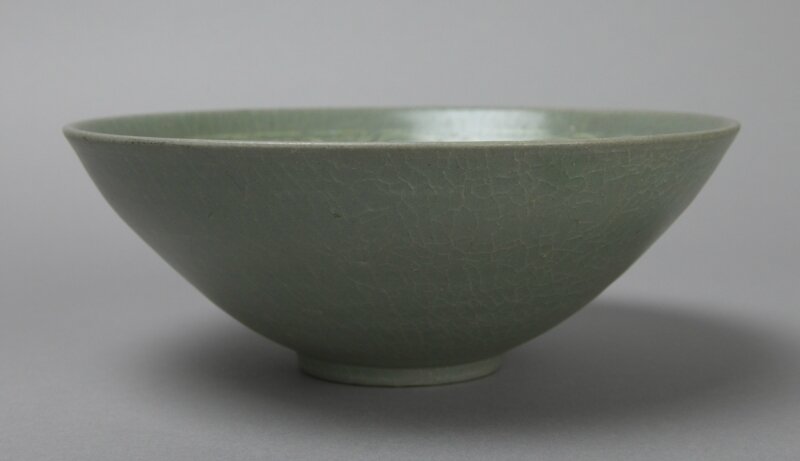
Bowl with floral sprays, 12th–13th century, Korean, Goryeo dynasty, 918–1392. Stoneware with slip-inlaid and incised designs under celadon glaze; h. 7.4 cm., diam. 19.1 cm. (2 15/16 x 7 1/2 in.). Gift of the Nicholas Andrew and Mitzi Peterson Natsios Family: Christine, Valerie, Alexandra and Deborah Natsios, Graduate School Class of 1979 (2006-832) © 2016 The Trustees of Princeton University
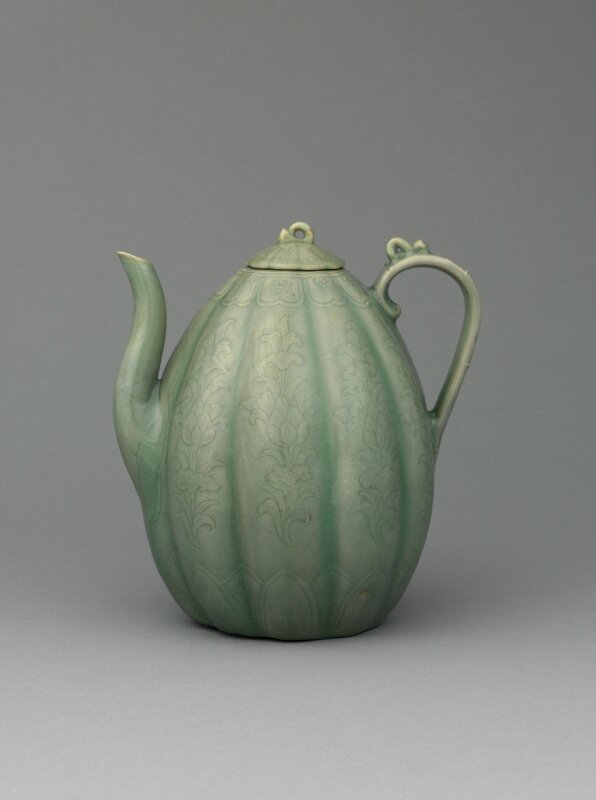

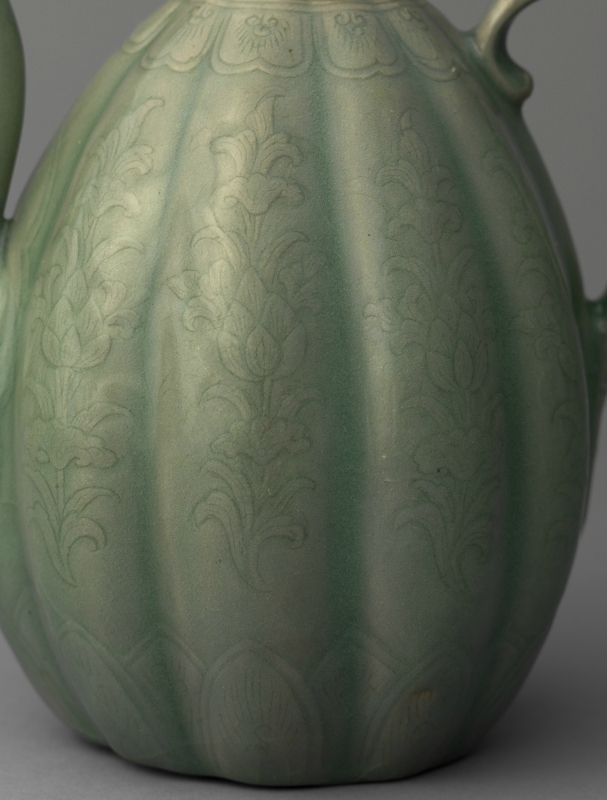

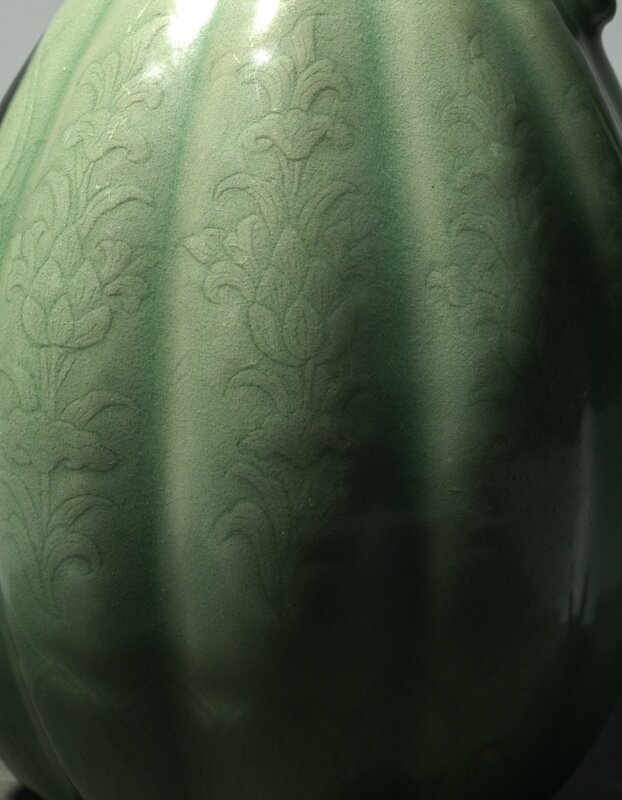

Melon ewer with lotus-flower design, 12th Century, Korean, Goryeo dynasty, 918–1392. Stoneware with celadon glaze, underglaze relief, and incised designs; h. 20.5 cm., diam. 18.0 cm. (8 1/16 x 7 1/16 in.). Museum purchase, Fowler McCormick, Class of 1921, Fund (2010-81) © 2016 The Trustees of Princeton University

/https%3A%2F%2Fprofilepics.canalblog.com%2Fprofilepics%2F1%2F0%2F100183.jpg)
/https%3A%2F%2Fstorage.canalblog.com%2F03%2F02%2F119589%2F96711876_o.jpg)
/https%3A%2F%2Fstorage.canalblog.com%2F11%2F31%2F119589%2F94773502_o.jpg)
/https%3A%2F%2Fstorage.canalblog.com%2F20%2F83%2F119589%2F94772815_o.jpg)
/https%3A%2F%2Fstorage.canalblog.com%2F26%2F72%2F119589%2F75604929_o.jpg)
/https%3A%2F%2Fstorage.canalblog.com%2F59%2F60%2F119589%2F26458628_o.jpg)


/http%3A%2F%2Fstorage.canalblog.com%2F48%2F20%2F119589%2F129532416_o.jpg)
/http%3A%2F%2Fstorage.canalblog.com%2F63%2F64%2F119589%2F129364682_o.jpg)
/http%3A%2F%2Fstorage.canalblog.com%2F69%2F30%2F119589%2F129268894_o.jpg)
/http%3A%2F%2Fstorage.canalblog.com%2F83%2F41%2F119589%2F129150407_o.jpg)